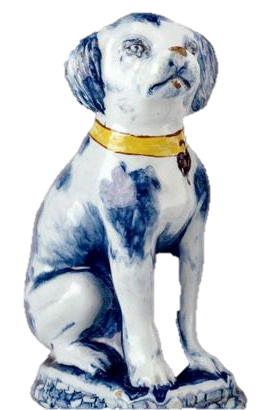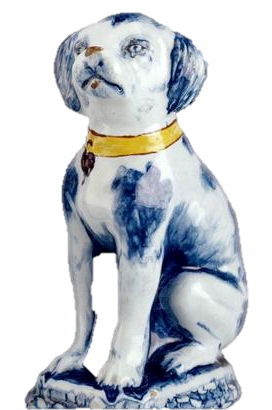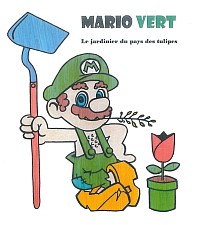Puppy Training
The puppy training is targeted to owners of puppies from 9 weeks old*.
We teach the puppy to pay attention to you as a handler so that your dog is engaged, committed and willing to listen. A dog that is engaged will only pay attention to you when he is outside his home, he will walk relaxed on his lead, he will come to you when you call him and he is able to control himself in specific situations.
We use positive training methods as much as possible. This means that we try to avoid provoking certain behaviour by holding a treat or toy in front of the dogs’ nose but encourage him to think for himself and decide what sort of behaviour will guarantee the biggest reward. Of course, the dog will always receive a reward when he displays the correct behaviour. The rewards can be a delicious treat, toy or tug game, for example.
 During the lessons we teach you to understand your dog. We use observation techniques to study your dogs’ posture, attitude and behaviour, so that you can understand what he is trying to tell you and more importantly how you should react and interact. You will learn to understand what is important to your dog and what not. We also spend time in the lessons doing social development exercises with your puppy. The pup’s go through an important social development phase up until they are 12 weeks old which means training in this early phase is essential in forming a stable, well-educated dog, that should remain so his whole life long!
During the lessons we teach you to understand your dog. We use observation techniques to study your dogs’ posture, attitude and behaviour, so that you can understand what he is trying to tell you and more importantly how you should react and interact. You will learn to understand what is important to your dog and what not. We also spend time in the lessons doing social development exercises with your puppy. The pup’s go through an important social development phase up until they are 12 weeks old which means training in this early phase is essential in forming a stable, well-educated dog, that should remain so his whole life long!
*Between the ages of 7 to 9 weeks old we offer private puppy training at home. In the lessons we cover good social development, 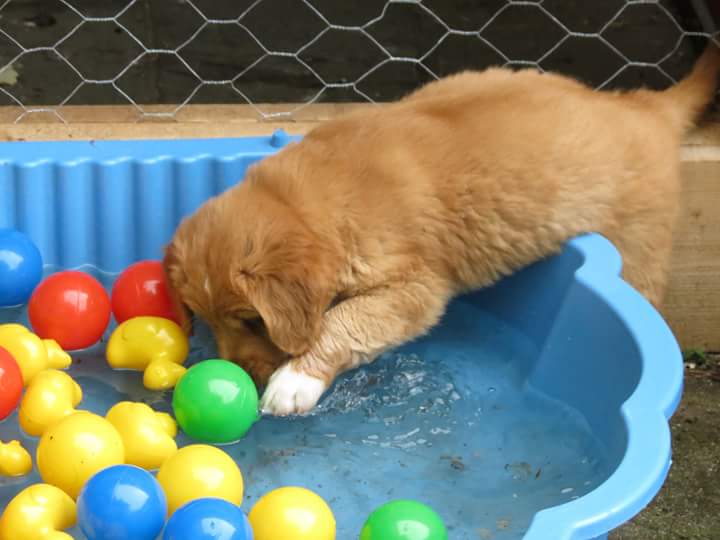 toilet training, learning to be left alone at home and not to damage clothes or furniture. We can also give useful introductory advice for the first few days and nights with your puppy, to deal with the sometimes difficult or unexpected situations that occur as you’re getting to know one another, in addition of course to the hours of pleasure you will have with your new friend!
toilet training, learning to be left alone at home and not to damage clothes or furniture. We can also give useful introductory advice for the first few days and nights with your puppy, to deal with the sometimes difficult or unexpected situations that occur as you’re getting to know one another, in addition of course to the hours of pleasure you will have with your new friend!
Workshops
Dog dance
Dog dance, the ultimate partnership of dog and handler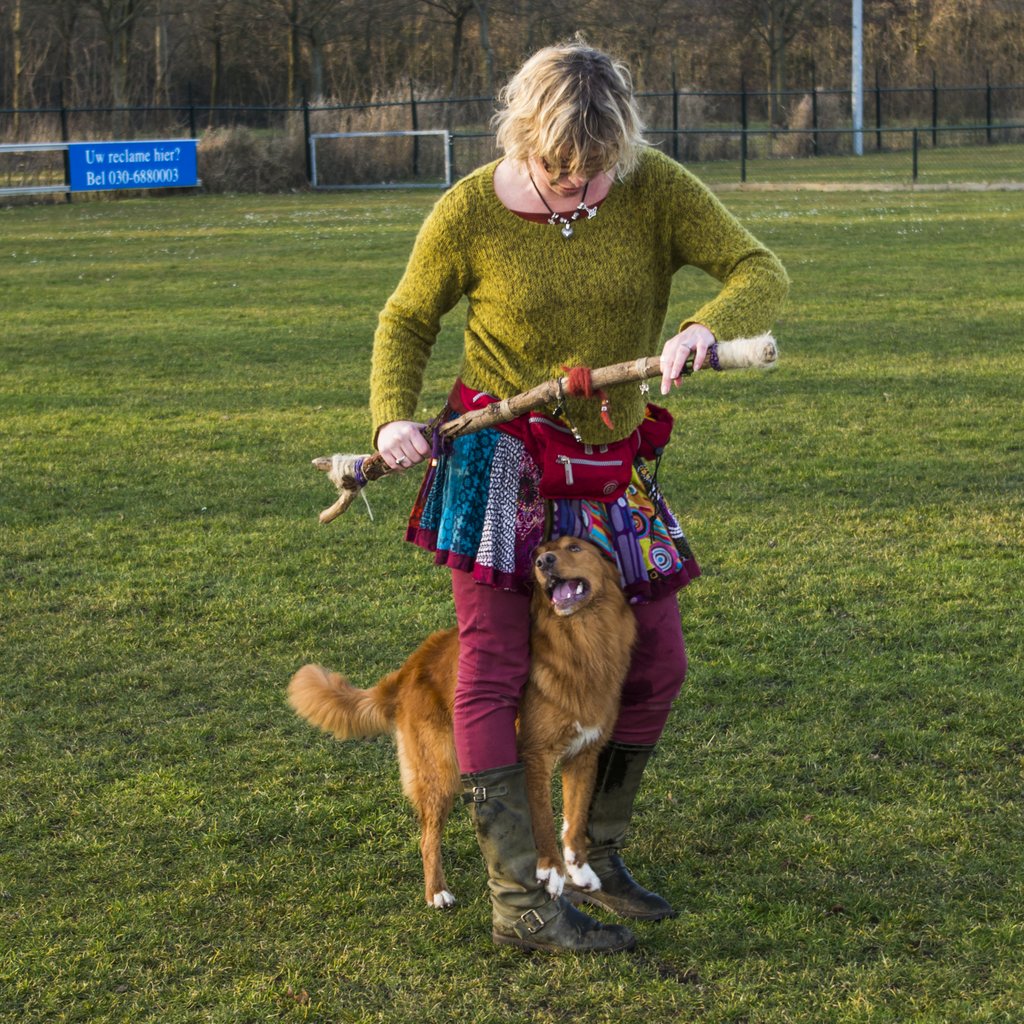
It is difficult to explain exactly what ‘dog dance’ is. The idea conjures up a picture of a person holding the front paws of their dog and dancing around the room, like a ballroom dance. Well, that is definitely not what it is! The concept is based on the fact that no physical contact occurs between dog and handler but that the dog chooses to complete exercises and movements to music in order to earn a reward. It can be compared to a dressage performance of horse and rider. During a dog dance lesson we teach the dog a number of exercises and movements that can be carried out in sequence to music. When the dog performs the exercise and movements it looks like a sort of dance, therefore the sport, dog dance!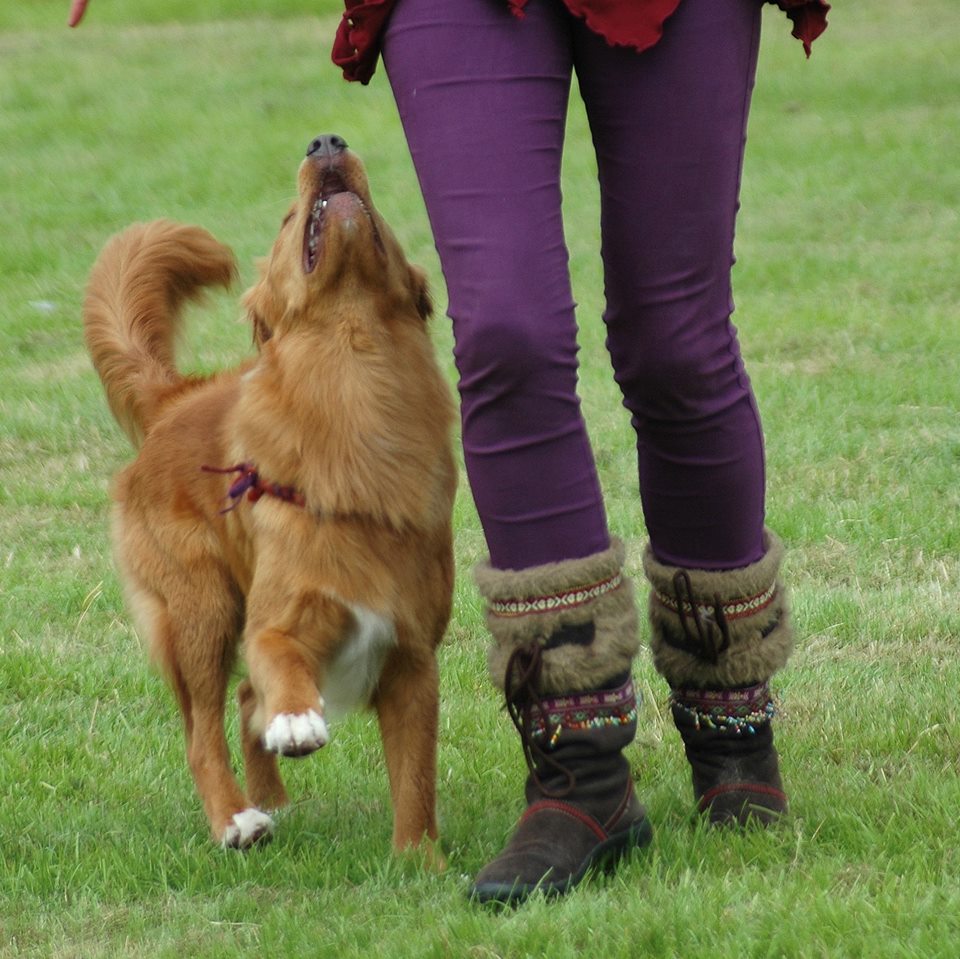 Dog dance is based on the intensive teamwork of handler and dog together in order to ensure that the dog completes the exercises and movements precisely, on command and in time with the handler so that is looks like an integrated dance. The type of exercises and movements that the dog will be taught include: a slalom between the legs, a circle around the handler, a jump over an arm of leg, a crawling movement etc. The possibilities are endless with the enjoyment of handler and dog as the most important factor!
Dog dance is based on the intensive teamwork of handler and dog together in order to ensure that the dog completes the exercises and movements precisely, on command and in time with the handler so that is looks like an integrated dance. The type of exercises and movements that the dog will be taught include: a slalom between the legs, a circle around the handler, a jump over an arm of leg, a crawling movement etc. The possibilities are endless with the enjoyment of handler and dog as the most important factor!
Which training methods are used to train the dog?
A dog is only prepared to carry out difficult movements and exercises in sequence when he is enjoying himself. It is therefore important to ensure that his actions are rewarded with lots of praise and a treat that he really loves. That can be an edible dog treat or a toy, whatever works for your dog. Praise and patience, these are the key success factors for dog dance!
Can all dogs learn dog dance?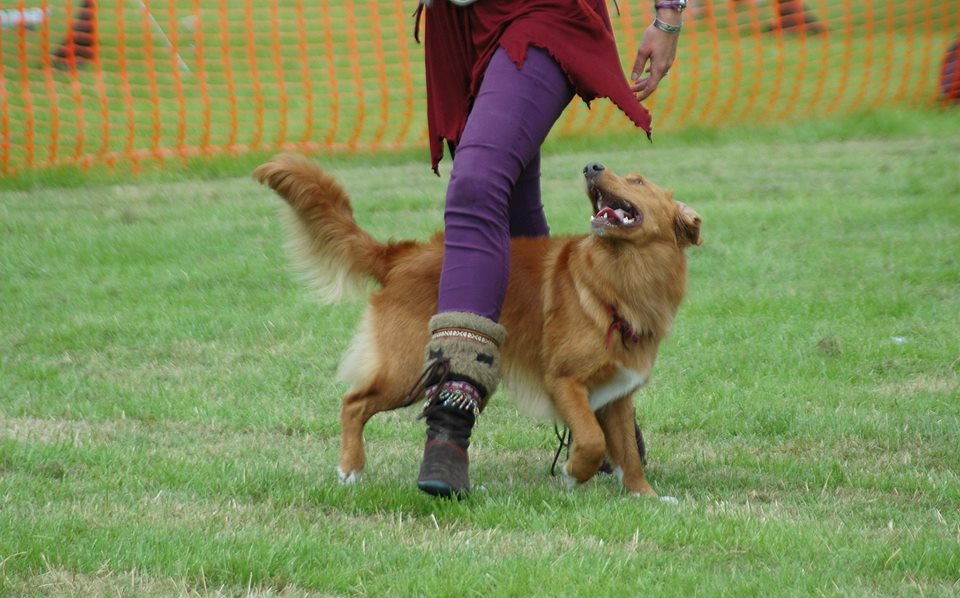
Every fit and healthy dog that loves treats is able to learn the exercises and movements but that doesn’t mean that it is then a dog dance. As handler you also need to enjoy creating a routine to music with your dog. This sport does not limit your creativity so you are free to choose which movements and exercises you want to include in your routine and can therefore tailor it to suit the ability of your dog and what he enjoys the most. Every dog is different but there are always exercises and movements possible that match the ability of your dog and your own style.
Behavior advice lesson
What questions can you ask for a behavior advice lesson?
You can contact all your questions regarding the behavior of your dog. I will give you a few examples:
- My puppy / dog is still not toilet trainesd, how do I learn that?
- My puppy can not be at home alone, how do I build that up?
- My puppy / dog is afraid of it ... .. how do I deal with this?
- My puppy / dog does not come when I call him.
- My puppy / dog is pulling on the leash.
What can you expect from a behavior advice lesson?
Prior to the behavior advice lesson you will be emailed a short questions list. It is nice if you fill it in carefully and send it back. In this way, the behavioral advisor can thoroughly explore your request for help and the 60-minute lesson can be optimally used to give you good advice in the behavior of your dog.
During the lesson you will be asked some additional questions and will look at how the dog behaves in the space / field and how you react to the dog. All this together will lead to advice and how to deal with your request for help.
The week after the lesson, the behavior adviser will briefly send you the discussed advice by e-mail. If necessary, it is possible to arrange a repetition of the lesson after two to four weeks, which will take 30 minutes.
What are the costs of a behavior advice lesson?
The costs are € 50 per lesson for 60 minutes. When more time is needed to advise you well, it is advisable to make a follow-up appointment. If you have several problems with your dog that do not seem to be in contact with each other, it is wise to discuss a maximum of 1 to 2 problems per lesson, to work on this and possibly discuss the other problems at a later stage.
Behavioral therapy
When is behavioral therapy necessary?
To answer the above question, it is important to know the difference between a dog trainer, a behavior advisor and a behavioral therapist.
A dog trainer teaches in a group or private way in raising or training your dog. Velaal limits itself to preventive advice and transferring how you teach a dog something. A well trained dog trainer will be in possession of the diploma 'Kynologisch Instructeur'. An important function with which you try to prevent a lot of problem behavior.
A behavior adviser can help you with small mistakes that have come to you so well-intended upbringing or training, or with questions that they can not help you with at the dog club. More insight into the behavior and possibly problem behavior of the dog is necessary and besides the diploma 'kynological instructor' one must possess the diploma behavior advisor within Tinley's vet practice.
A behavioral therapist often also has the above-mentioned diplomas and also a completed HBO training to become a behavioral therapist (These are training courses from, among others, Dogvision and the Gaus academy).
Once in the behavior advice consultation or during the previous contact is noticed that the 'problem behavior' of your dog is a danger for you, your dog or his environment or his wellbeing continuously affects will not have enough to give advice but is behavioral therapy recommended.
You can think of:
- Fears (for sounds, strange people, other dogs, children, etc.)
- Aggression (to strange people, other dogs, children, etc.)
- chasing (cyclists, cats, other dogs, game etc.)
- Not being able to be alone (barking, squealing, breaking, etc.)
- Compulsive behavior (chasing after light, self damage, tail chasing etc.)
What can you expect from behavioral therapy?
In behavior therapy we will dig further than with a behavior advice consultation. We start by making a lot of inquiries and observing a diagnosis first, from this diagnosis we will then discuss the correct therapy methods with you. For example, there are more than 7 forms of aggression and these all require a different approach! After studying the questionnaire you have filled out and possibly visual material, the therapist will come to you and your dog. She will ask some extra questions and then go with you to the 'problem' behavior of your dog. Often during this first visit she will be able to proceed to a diagnosis and accompanying therapy exercises. Sometimes consultation with third parties and home reading will precede this. In most cases, you will also be practicing briefly during this first visit.
The behavioral therapist will send you a short therapy report by mail the week after the behavior therapy consultation. You get to work with the given exercises and after two weeks there will be a therapy lesson of half an hour. Here you show the therapist the steps you and your buddy have taken and, if necessary, you will be adjusted or receive additional advice. Of course it is always possible to keep in touch about the course of the used therapy!
What are the costs for behavioral therapy?
The costs are € 125, - per 120 minutes consultation. The costs include the assessment of the questionnaire you completed and observing the "made videos" the problem behavior. Making the right diagnosis and aftercare regarding this problem behavior. From the therapy class after two weeks the costs are € 25 per half hour. If you have several problems with your dog that are not connected to each other, it is advisable to discuss a maximum of 1 to 2 problems per consultation, to go to work and possibly discuss the other problems at a later stage.
Obedience training at Les Chiens Sportives
If you think obedience training is boring think again! At Les Chiens Sportives we offer that bit extra in the obedience training. Exercises to the commands; sit, stand, down, heel, and stay are essential basics but there is much more to learn in combination with your dog, for example: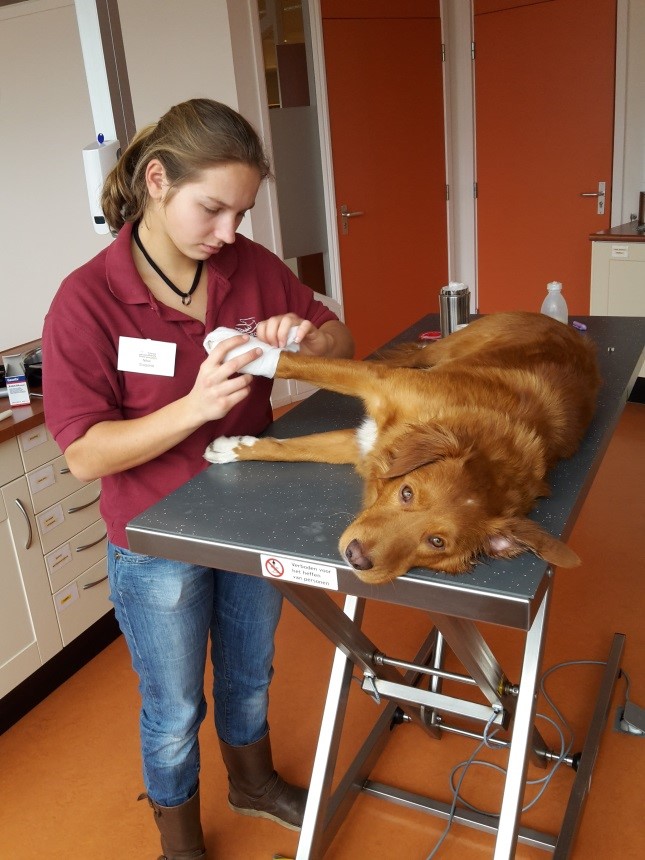
- How do I behave in combination with my dog and other dog owners?
- How do I react if my dog is scared or starts barking and lunging at something/someone?
- How do I teach my dog to stay calm and be good at the vet?
- How do I teach my dog to stay by me, lying down in a restaurant?
And there are many more exercises to practice that ensure your dog is welcome everywhere you go, giving you much more freedom.
At Les Chiens Sportives we make lessons fun and creative by combining obedience lessons with exercises for other dog sports. Exercises such as;
- Balance and coordination exercises.
- Detection and thinking games.
- Motivational techniques.
- Learning tricks, for example with a clicker.
- Learning retrieval of an object.
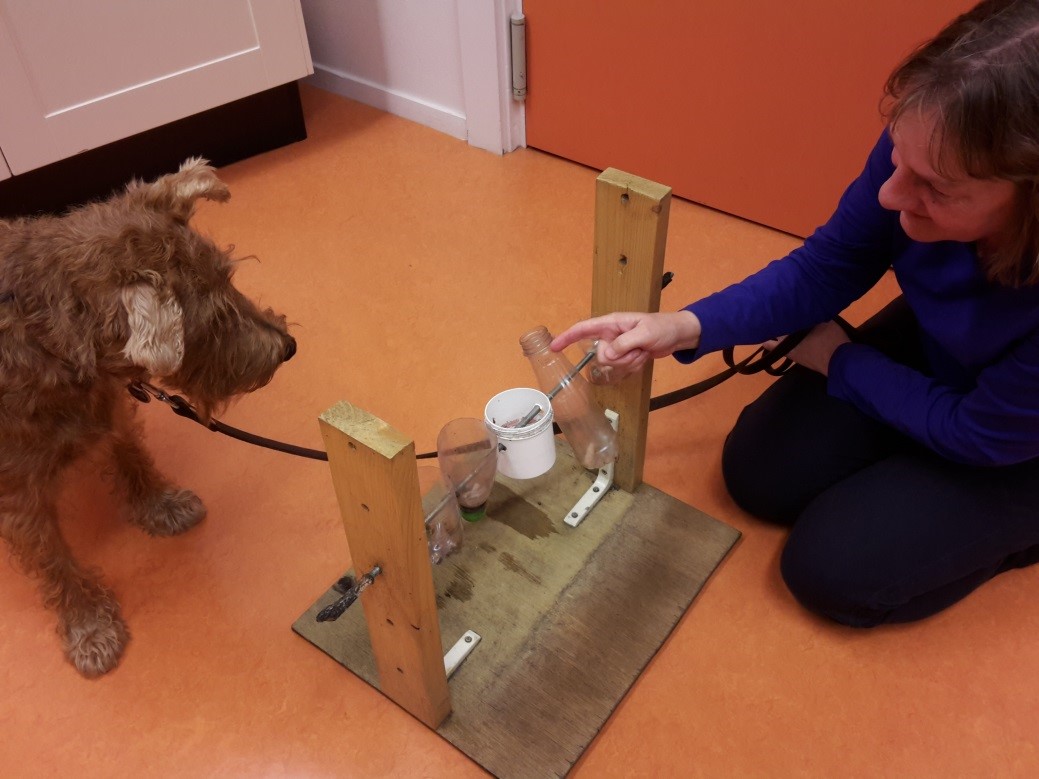 So the training is not the same standard programme every week but a wide variation of exercises ensuring that every lesson is pure enjoyment for dog and handler! This approach makes the training more effective and engaging.
So the training is not the same standard programme every week but a wide variation of exercises ensuring that every lesson is pure enjoyment for dog and handler! This approach makes the training more effective and engaging.
It also forms an ideal stepping stone for starting training in other dog sports that we offer. Since we introduce exercises from other dog sports in the obedience training the dog becomes more aware of its own body and what it is capable of, its limitations. This is important for prevention of injuries that can occur during the practice of agility and gundog sports.
Obedience training groups are formed with a maximum of five combinations (of dog and handler) to guarantee quality and a personal approach. The 60 minute lessons consist of 45 minutes practical training followed by 15 minutes theory. The theory will focus on the communication between dog and handler because if you want to learn to work with your dog then you need to understand the language it uses to communicate with you!
